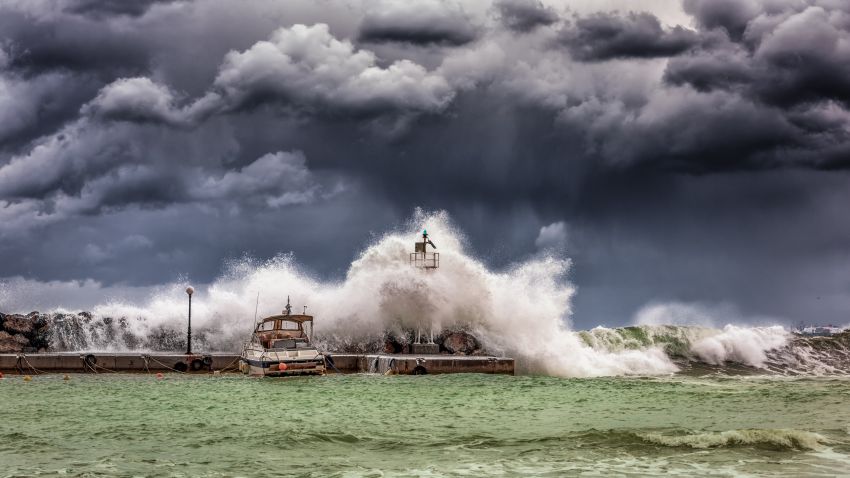
The catastrophic floods in Queensland and northern New South Wales have shown just how inadequate the response from three levels of government has been. The federal government and many state governments pay lip service at best to the link between climate change and extreme weather events.
There are people-centred ways of responding to disasters and Cuba stands out as a world leader in natural disaster preparedness and recovery.
A major hurricane affects Cuba every 2–4 years causing the destruction of homes and economic loss but very few deaths. Cuba consistently experiences the lowest death toll during hurricane season, despite being the most populated island in the Caribbean.
Since the revolution in 1959, Cuba has significantly reduced deaths from hurricanes, compared to many wealthier, industrialised countries, despite experiencing hurricanes at their greatest intensity.
Cuba’s centrally-planned, state-controlled economy and administration — including the National Civil Defence (DCN) set up in 1966 — gives it several advantages: collaboration; communication; prevention; and response.
Cuba’s Decree-Law 170, passed in 1997, has a goal of protecting the population, economy and the environment from natural disasters and other catastrophes. The National Etat-Major of Civil Defence coordinates different economic and social entities to protect people and the economy.
Cuba’s national disaster mitigation program is underpinned and supported by research and work on climate change, a multi-hazard risk assessment, physical and resource planning and land use regulations. Its National Institute of Territorial Planning and Urbanism and the Ministry of Construction promotes a safety culture.
The country began its work on risk reduction and adaptation to climate change as early as 1991. Disaster and medical diplomacy have been key components of its foreign policy since 1959. Its national emergency planning structure is a part of the DCN, which addresses risk reduction through social and economic equity and poverty reduction.
Its disaster preparedness and response structure includes: a risk reduction program; an emergency monitoring warning system; and an emergency response and disaster mitigation system.
Every level of government and the community, such as family physicians, undertake risk mapping. The connection with provincial, municipal and local organisations enables Cuba’s government and emergency response teams to respond quickly to mobilise the necessary resources.
Cuba has a strong disaster response in urban areas as 75% of people live in towns and cities but rural areas are not neglected. Its disaster preparedness system includes rapid community mobilisation, mass evacuation measures and a network of secure shelters. Vulnerable people — the elderly, people with a disability and pregnant women — are prioritised.
Each year all municipalities compile vital information about its residents such as age, the number of infants, pregnant women and people with disabilities and their physical needs.
Cuba’s meteorological institute also projects the likely path of hurricanes before they reach land and shares data with US scientists. Its disaster response system has four stages: information; alert; alarm; and recovery. Seventy-two hours prior to a hurricane, the DCN informs the country about disaster measures through radio, television and mobile phones.
Community shelters are set up in schools and community buildings at the “alarm” stage. People receive water, medicines and supplies. Civil protection committees check evacuation plans and shelters and, when necessary, send students home from school.
Forty-eight hours prior to any hurricane, authorities inform high-risk areas and begin evacuations. As the hurricane makes landfall, authorities provide coverage and the DCN attempts to maintain lines of communication. Once the hurricane has passed, rescue operations begin. People return home, after the DCN has finished their inspection.
Tallies of the damage are made. Healthcare following the hurricane is ongoing. Disaster-relief plans involve government leaders, civilian defence personnel, local politicians and community organisations. Cuba helps people protect personal items during evacuations and ensures that damaged property is replaced at no cost.
A highly educated and engaged population is key to the success of its disaster management program. Schools teach hurricane awareness and disaster preparedness from the first grade. Students have a two-day training session each year in risk reduction for hurricanes, supplemented with simulation exercises and concrete preparation actions.
Residents’ high level of civil participation also helps. Most Cubans are members of mass organisations and have a strong sense of community. Citizens are actively involved in the planning and implementation of lifeline structures which assists disaster preparedness.
Someone is assigned in each residential block to record who is being evacuated to which shelter. Healthcare following any dangerous weather event is essential. Cuba’s advantage over most other Caribbean nations is its policies of free universal healthcare, the world’s highest ratio of doctors to population and various positive health indicators, such as high life expectancy and low infant mortality.
Each family doctor and nurse is responsible for 120–160 families. Following hurricanes, healthcare professionals monitor mental health problems in children and other vulnerable people.
The US economic, commercial and financial embargo of Cuba, with its extra-territorial effects on other countries trading with or otherwise dealing with the country, means that Cuba often lacks key resources and infrastructure and faces logistical challenges. Despite this, Cuba’s pro-people approach means it can make a quick recovery from extreme weather events.
Australia should study Cuba’s disaster and recovery management program.